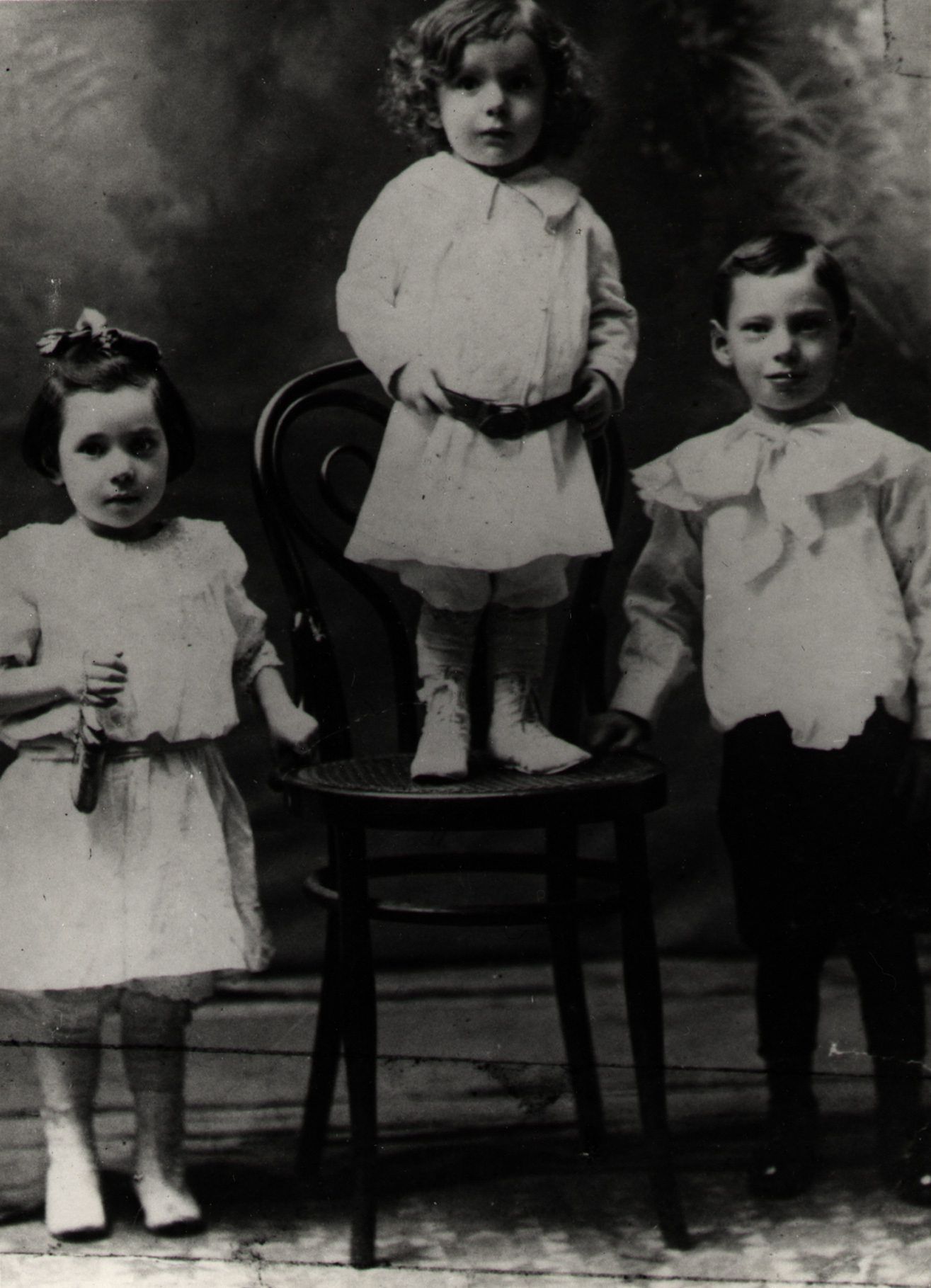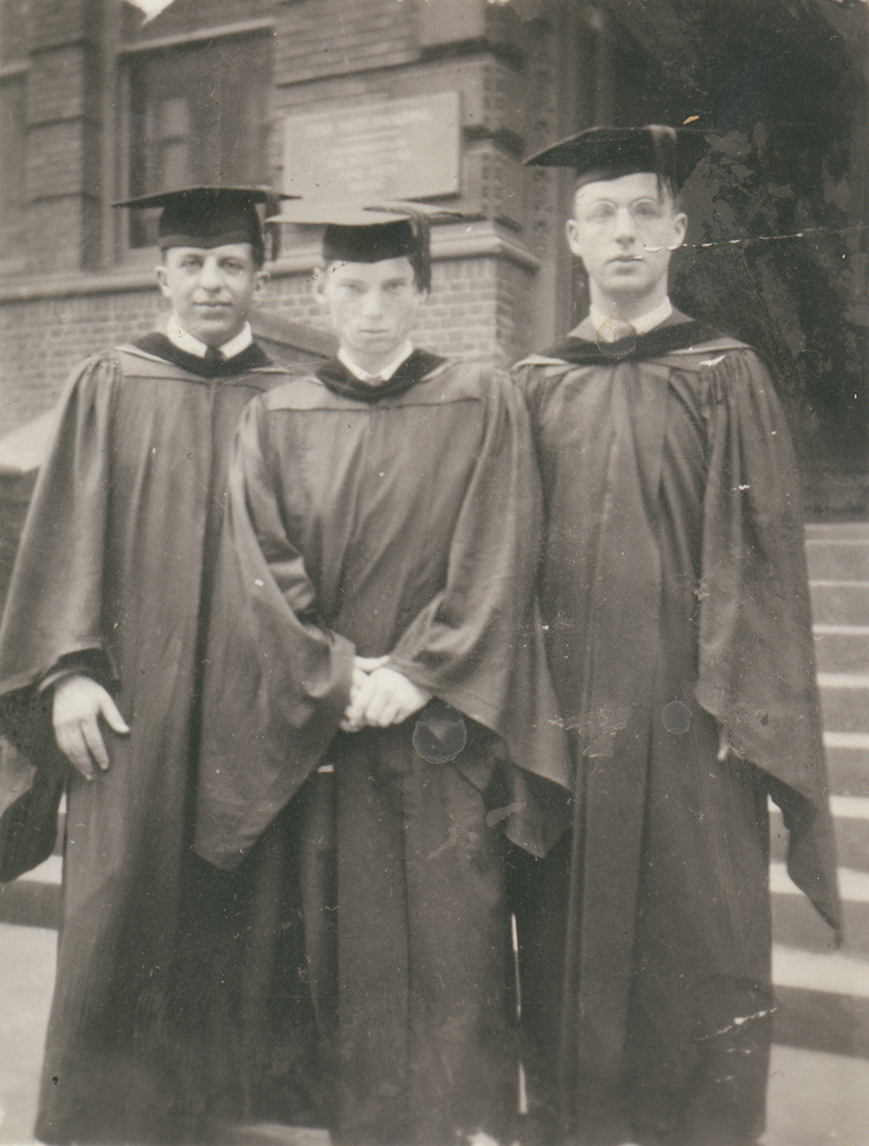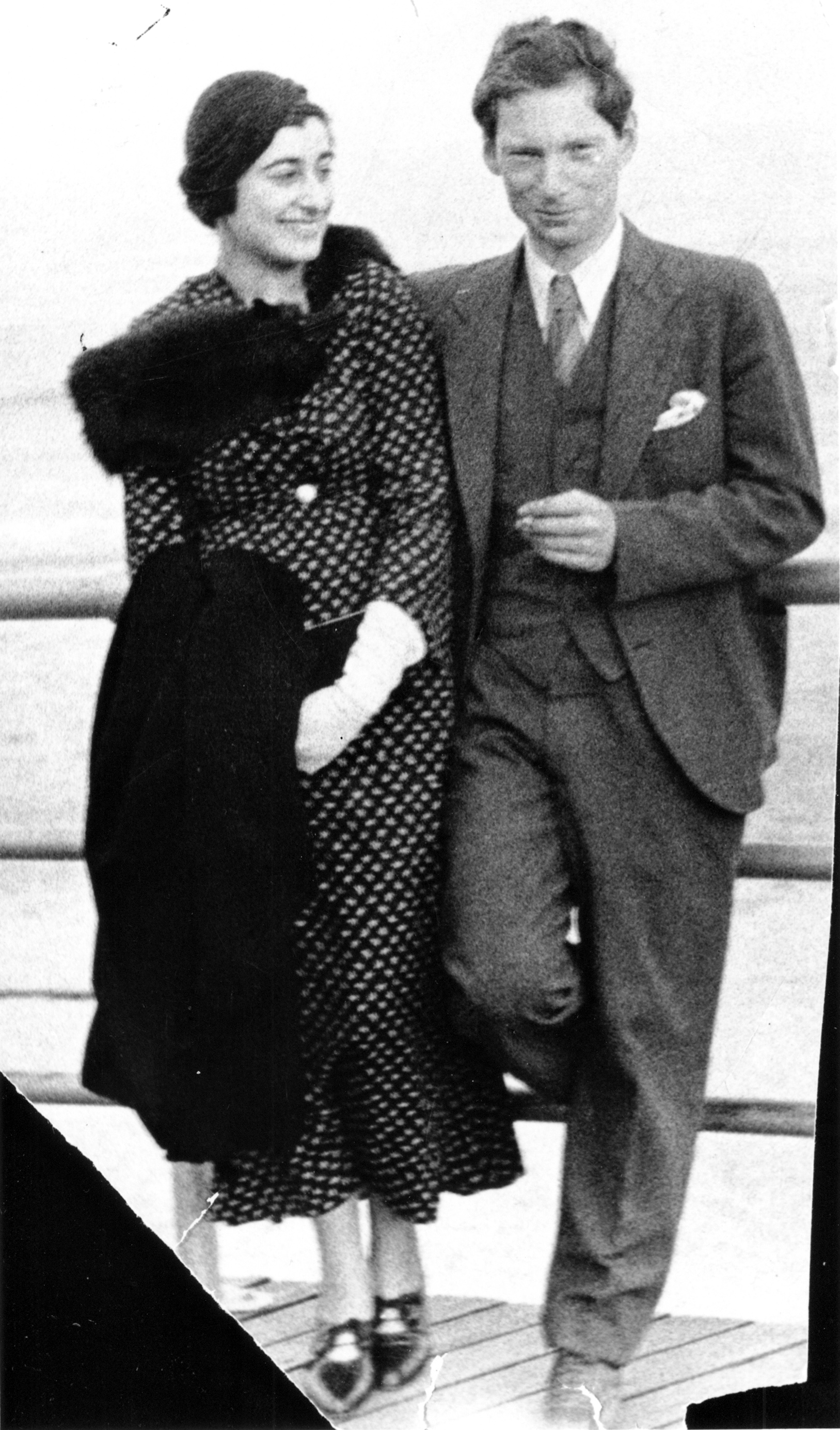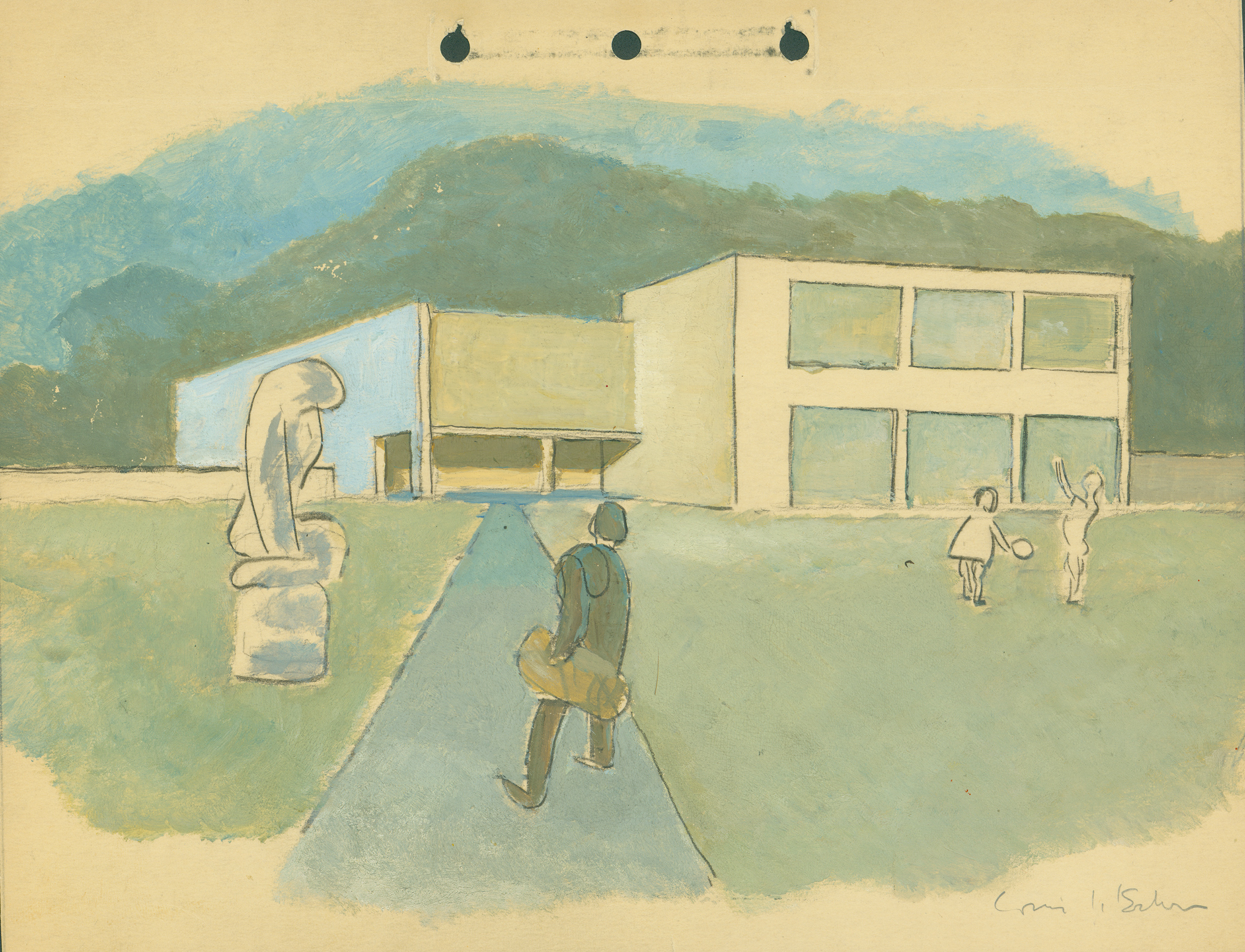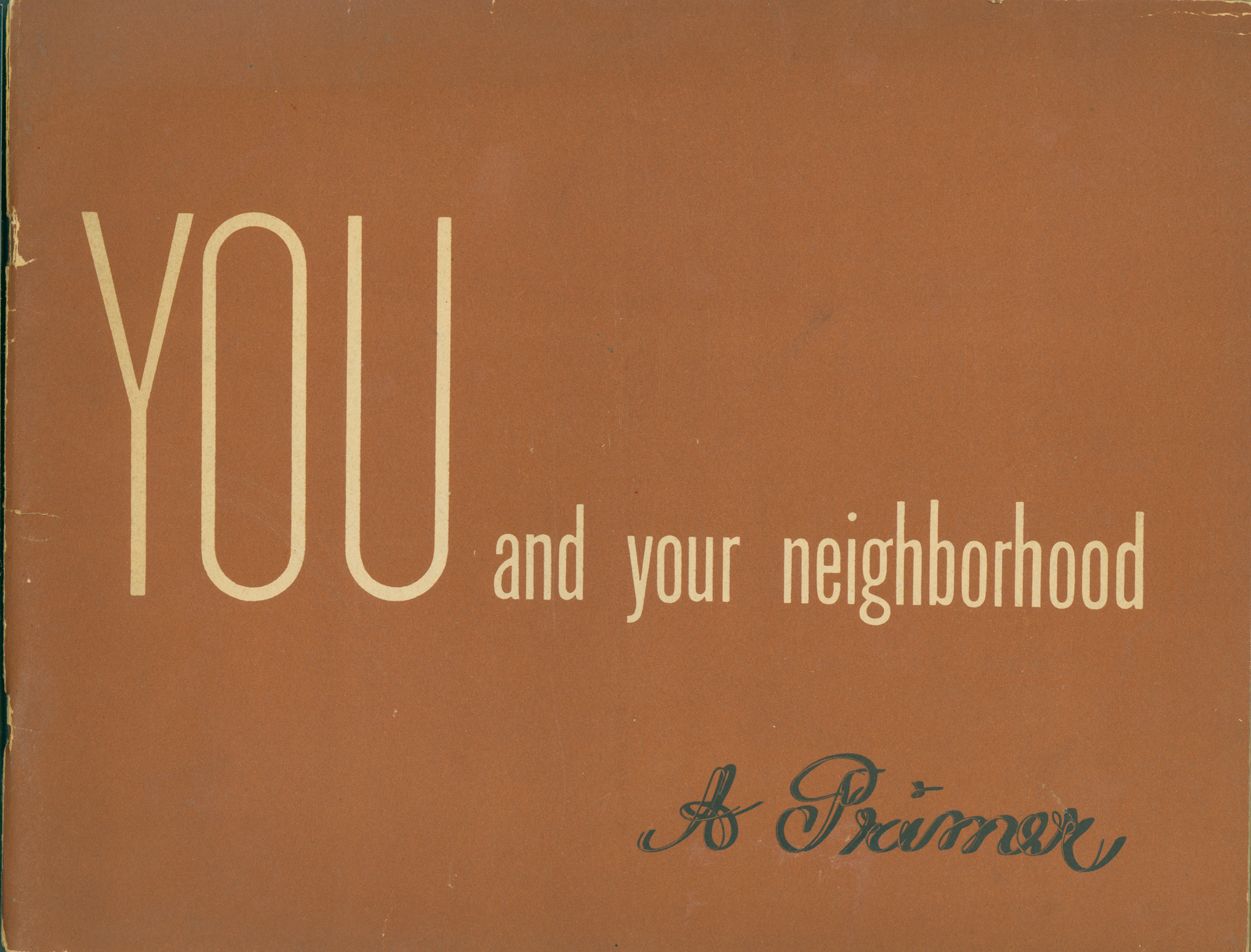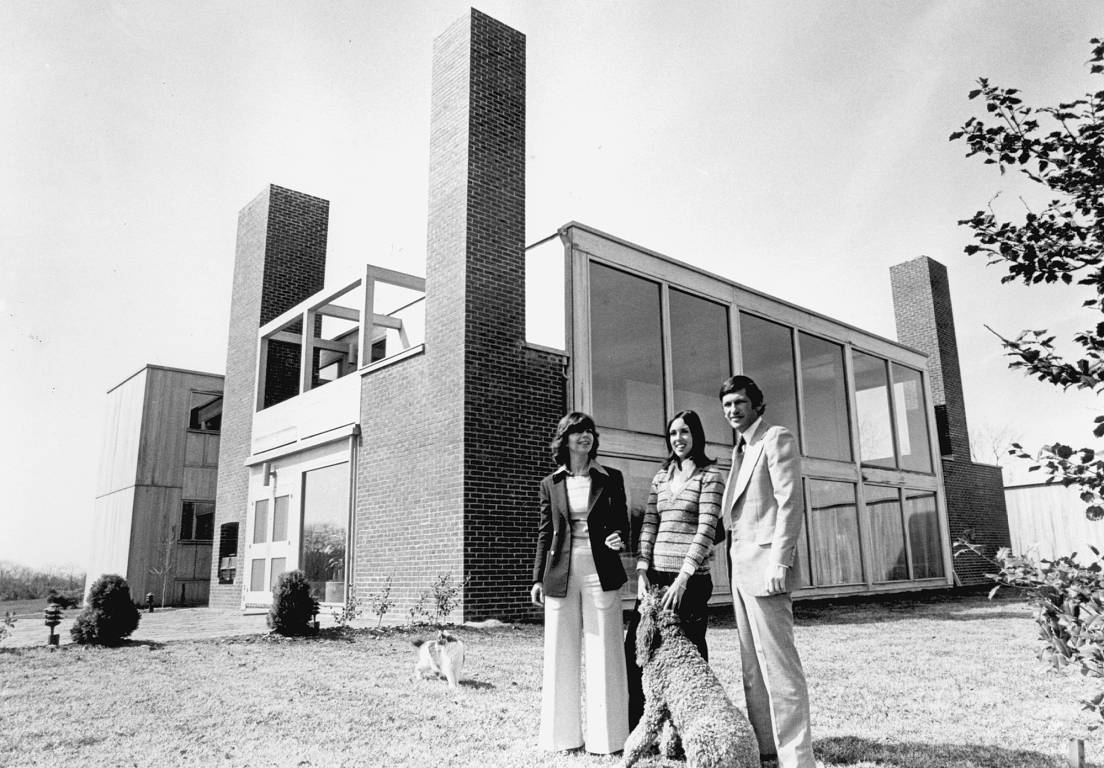
Kahn Biography
Louis I. Kahn in his office in the 1960s. Louis I Kahn Collection, University of Pennsylvania and Pennsylvania Historical and Museum Commission
Louis I. Kahn was born in Estonia and raised in Philadelphia. He was trained in architecture in the Beaux-Arts tradition at the University of Pennsylvania under Paul Philippe Cret. As a mature architect, Kahn was distinguished from his contemporaries (in a period dominated by the International Style) by his unique personal philosophy of architecture and a style marked by a profound sense of history and pure geometry in design and the texture of materials in construction. His legacy is as much in his teaching and his unbuilt designs as in his major built works. He lectured and wrote on architecture beginning in the 1930s. He taught at Yale University (1947–55) and was Cret Professor of Architecture at the University of Pennsylvania from 1956 until his death.
Kahn’s major built works include Yale University Art Gallery; Alfred Newton Richards Medical Research Building, University of Pennsylvania; Salk Institute for Biological Studies, La Jolla, California; First Unitarian Church and School, Rochester, New York; Performing Arts Theater, Fort Wayne, Indiana; Eleanor Donnelley Erdman Hall, Bryn Mawr College; Indian Institute of Management, Ahmedabad, India; Sher-e-Bangla Nagar, Capital of Bangladesh, Dhaka, Bangladesh; Library, Phillips Exeter Academy, Exeter, New Hampshire; Kimbell Art Museum, Fort Worth, Texas; and Yale Center for British Art.
When Kahn died unexpectedly of a heart attack in 1974, two of his most important works, the Yale Center for British Art and the national capital of Bangladesh at Dhaka, were still under construction. After his death, his office was closed, but his former associates completed, when possible, the projects under construction.
Kahn Key Events Timeline
The information presented here is primarily taken from William Whitaker¹s chronology that appeared in Louis Kahn: The Power of Architecture edited by Mateo Kries, Jochen Eisenbrand, and Stanislaus von Moos (Weil am Rhein: Vitra Museum, 2012).
“Louis Isadore Kahn is born Leiser-itze Schmulowsky in Pernow, Russia (now Parnu, Estonia) to Lieb Schmulowsky (1875–1963) and Beila Mendelewitsch (1876–1949).
Kahn’s father served in the Russian Army as a paymaster but also possessed talents as an artist and designer in reverse glass painting. He was also literate in several languages.
”
“Suffers severe burns to his face and hands, marking him for life. Father emigrates to the U.S., while mother and son move to the island of Osel (now Saaremaa). ”
“Arrives at the port of Philadelphia with his mother and siblings. His father, now using the name Leopold Kahn, takes them to a rented apartment in the Northern Liberties neighborhood, an immigrant slum.Louis I. Kahn (right) and his sister, Sarah, and brother, Oscar, ca. 1908. Louis I. Kahn Collection, University of Pennsylvania and Pennsylvania Historical and Museum Commission
”
“Excels in art and music during his grade school education.”
“Enrolls at Central High School, continues art studies through classes at the Graphic Sketch Club, and teaches himself to become a skilled piano player.”
“Enters School of Fine Arts, University of Pennsylvania
”
“Graduates with Bachelor of Architecture from the University of Pennsylvania.Louis I. Kahn with classmates Norman Rice and Hyman Cunin, June 1924. Norman Rice Collection, The Architectural Archives, University of Pennsylvania.
”
“Offered position by Molitor working on preliminary schemes for the layout of the Sesquicentennial Exposition.
”
“Embarks on a yearlong trip to the United Kingdom and continental Europe.”
“Begins in the office of Paul Philippe Cret to “work on The Century of Progress ... Exposition [in] Chicago 1933” and other projects. ”
“Marries Esther Virginia Israeli (1905–96) in Philadelphia, a research assistant and administrator for a neurologist, and moves into the home of his in-laws, living there for the next 37 years.Louis I. and Esther Kahn on their honeymoon, Atlantic City, NJ, August 1930. Esther Kahn Collection, Architectural Archives, University of Pennsylvania.
”
“Hired by the firm Zantzinger, Borie & Medary to help complete design work for the U.S. Department of Justice Building in Washington D.C.”
“Organizes the Architectural Research Group to study housing conditions in Philadelphia and make proposals for housing, slum clearance, and new construction methods.
”
“In a brief return to Cret’s office, Kahn completes a preliminary set of drawings for the 2601 Parkway Apartment Building, focusing on the layout of apartment units and the overall cubage of the building. This is his earliest known venture into housing design.”
“With the Architectural Research Group, Kahn exhibits a Model Slum Rehabilitation Project during “Better Homes Week.” The project is published in the Philadelphia Inquirer.”
“Registers with the AIA and begins independent practice”
“Receives first significant commission, a synagogue for Congregation Ahavath Israel of Oak Lane, in Philadelphia, completed in 1938.”
“Accepts a position as assistant principal architect, Resettlement Administration, Washington, D.C., under Alfred Kastner, to design the Jersey Homesteads project in Roosevelt, New Jersey, completed in March 1937.Jersey Homesteads presentation drawing by Louis I. Kahn. Louis I. Kahn Collection, University of Pennsylvania and Pennsylvania Historical and Museum Commission
”
“Prepares submission to the Glenwood Housing Project competition with George Howe, Oscar Stonorov, Kenneth MacKenzie Day, and others, for the newly organized Philadelphia Housing Authority. They place sixth. ”
“The Kahns’ daughter, Sue Ann, is born.”
“Forms partnership with George Howe in Philadelphia to pursue war-related housing work. Oscar Stonorov joins the partnership, and over the next several years, Kahn and Stonorov design seven workers’ communities, five of which were built, totaling more than 2,000 units.
”
“Kahn and Stonorov’s “Why City Planning is Your Responsibility” and “You and Your Neighborhood: A Primer” are published. Joins the nascent American Society of Planners and Architects, an activist alternative to the American lnstitute of Architects (AIA) focused on postwar planning.Cover of “You and Your Neighborhood: A Primer” by Louis I. Kahn and Oscar Stonorov, 1943. G. Holmes Perkins Collection, The Architectural Archives, University of Pennsylvania
”
“Meets Anne Griswold Tyng (1920–2011), a recent graduate of the Harvard University Graduate School of Design. ”
“Serves as an architectural consultant for the Philadelphia City Planning Commission.”
“Kahn’s partnership with Stonorov ends. Begins work on the Weiss House (1947–50) and the Genel House (1948–51), as well as the Radbill Building and Pincus Pavilion for the Philadelphia Psychiatric Hospital (1948–54).”
“Serves as visiting critic, subsequently becoming professor of architecture at Yale University and hires a series of graduates to work at his office in Philadelphia.”
“Meets and becomes close with Robert Venturi (1925–2018). Mother dies in Los Angeles.”
“Weiss House shown at the annual exhibition of the Philadelphia Chapter of the AIA; receives the Chapter Medal.Weiss House, East Norriton Township, Pennsylvania, ca. 1950. Louis I. Kahn Collection, University of Pennsylvania and Pennsylvania Historical and Museum Commission
”
“Departs for a three-month period as Architect in Residence at the American Academy in Rome.”
“While traveling throughout Egypt and Greece, receives news that he has been awarded the commission to design the addition to the Yale University Art Gallery (1951–53).”
“Kahn awarded Fellowship in the American Institute of Architects; cited for his contributions to education.”
“Dedication of the Yale University Art Gallery. The first of five buildings designed by Kahn to receive the AIA’s Twenty-five Year Award, a measure of a building’s lasting influence.Rendering of Yale University Art Gallery, New Haven, Connecticut, ca. 1952. Louis I. Kahn Collection, University of Pennsylvania and Pennsylvania Historical and Museum Commission
”
“Tyng and Kahn’s daughter, Alexandra, is born in Rome, Italy.”
“Begins teaching at the University of Pennsylvania’s School of Fine Arts, becoming a central figure in a faculty that would become known as the “Philadelphia School.” It also creates the “Master’s Studio,” a one-year, post-professional master’s degree program allowing students two semesters with Kahn.”
“Becomes Albert Farwell Bemis Professor at the School of Architecture and Planning at MIT.
”
“Commission to design the Richards Medical Research Laboratories at the University of Pennsylvania (1957–60).”
“Meets Harriet Pattison, which leads to a professional collaboration in the late 1960s and 1970s focused on landscape architecture and site planning. ”
“Commission for the Salk Institute in La Jolla, California (1959–65).Salk Institute, La Jolla, California, view down center courtyard toward ocean. John Nicolais Collection, The Architectural Archives, University of Pennsylvania
”
“Design for General Motors Exhibit for the 1964 New York World’s Fair (unbuilt).
”
“Design for Mikveh Israel Synagogue, Old City Philadelphia (unbuilt).”
“Single-building exhibition “Richards Memorial Research Laboratories” at the Museum of Modern Art, New York (MoMA). Kahn makes his first donation of drawings and models to MoMA’s Architecture and Design Collection following the exhibition.Louis I. Kahn at the opening of the Museum of Modern Art’s exhibition on his Alfred Newton Richards Medical Research Building, 1961. Richard Saul Wurman Collection, The Architectural Archives, University of Pennsylvania
”
“Son, Nathaniel (with Harriet Pattison), and is born.
Kahn’s practice becomes internationally recognized. He receives commissions for the Indian Institute of Management, Ahmedabad, India (1962–74), and Sher-e-Bangla Nagar, Capital of Bangladesh, Dhaka (1962–83).”
“Original publication of The Notebooks and Drawings of Louis I. Kahn by Falcon Press. (RSW and EF)”
“Commissioned for President’s Estate, Islamabad, Pakistan (1963–66). Father dies in Los Angeles. ”
“Receives honorary Doctor of Humanities from School of Design, University of North Carolina.”
“Receives honorary Doctorate of Fine Arts from Yale University.”
“Commission for the Dominican Motherhouse of St. Catherine de Ricci, Media, Pennsylvania (1965–69).”
“Commission for Kimbell Art Museum (1966–72). Appointed the first Paul Philippe Cret Professor of Architecture at the University of Pennsylvania.Louis I. Kahn teaching a graduate architecture studio on the third floor of the Furness Library, ca. 1975. James F. Williamson Collection, The Architectural Archives, University of Pennsylvania
”
“Commissioned for Hurva Synagogue, Jerusalem, Israel (1967–74) and the Library, Philips Exeter Academy (1967–72).”
“Commissioned for Palazzo dei Congressi, Venice, Italy (1968–74).”
“Commissioned for Family Planning Center, Kathmandu, Nepal (1970–75).”
“Commissioned for the Steven and Toby Korman House. Along with the Korman House, beginning in the 1940s, Kahn designs another eight private residences located throughout the suburbs of Philadelphia.”
“Commissioned for Government House Hill Development, Jerusalem, Israel (1971–73) in addition to development projects in Rabat, Morocco, and Tehran, Iran.Louis I. Kahn in Rabat, Morocco, ca. 1974. Henry Wilcots Collection, The Architectural Archives, University of Pennsylvania
”
“Receives the Gold Medal of the American Institute of Architects at the annual convention in Detroit, Michigan.”
“Receives Doctor of Fine Arts from University of Pennsylvania.”
“Second edition of The Notebooks and Drawings of Louis I. Kahn published by MIT Press. (RSW and EF)”
“Completion of the Kahn Korman House, Fort Washington, PennsylvaniaPhoto: William F. Steinmetz for the Philadelphia Inquirer
”
“Accepts the Gold Medal of the Royal Institute of British Architects, London.”
“Unveils design for the Franklin Delano Roosevelt Memorial in New York City. Keeping Kahn’s design, David Wisdom & Associates in association with Mitchell Giurgola Architects complete the memorial in 2012.Sketch of Franklin Delano Roosevelt Memorial, ca. 1973. Louis I. Kahn Collection, University of Pennsylvania and Pennsylvania Historical and Museum Commission
”
“After traveling to Bangladesh, Israel, and India, on his return trip from Ahmedabad to Philadelphia, Kahn dies of a heart attack at Pennsylvania Station, New York, at about 7:30 p.m.”
“Publication of What Will Be Has Always Been: The Words of Louis I. Kahn. (RSW)
”


